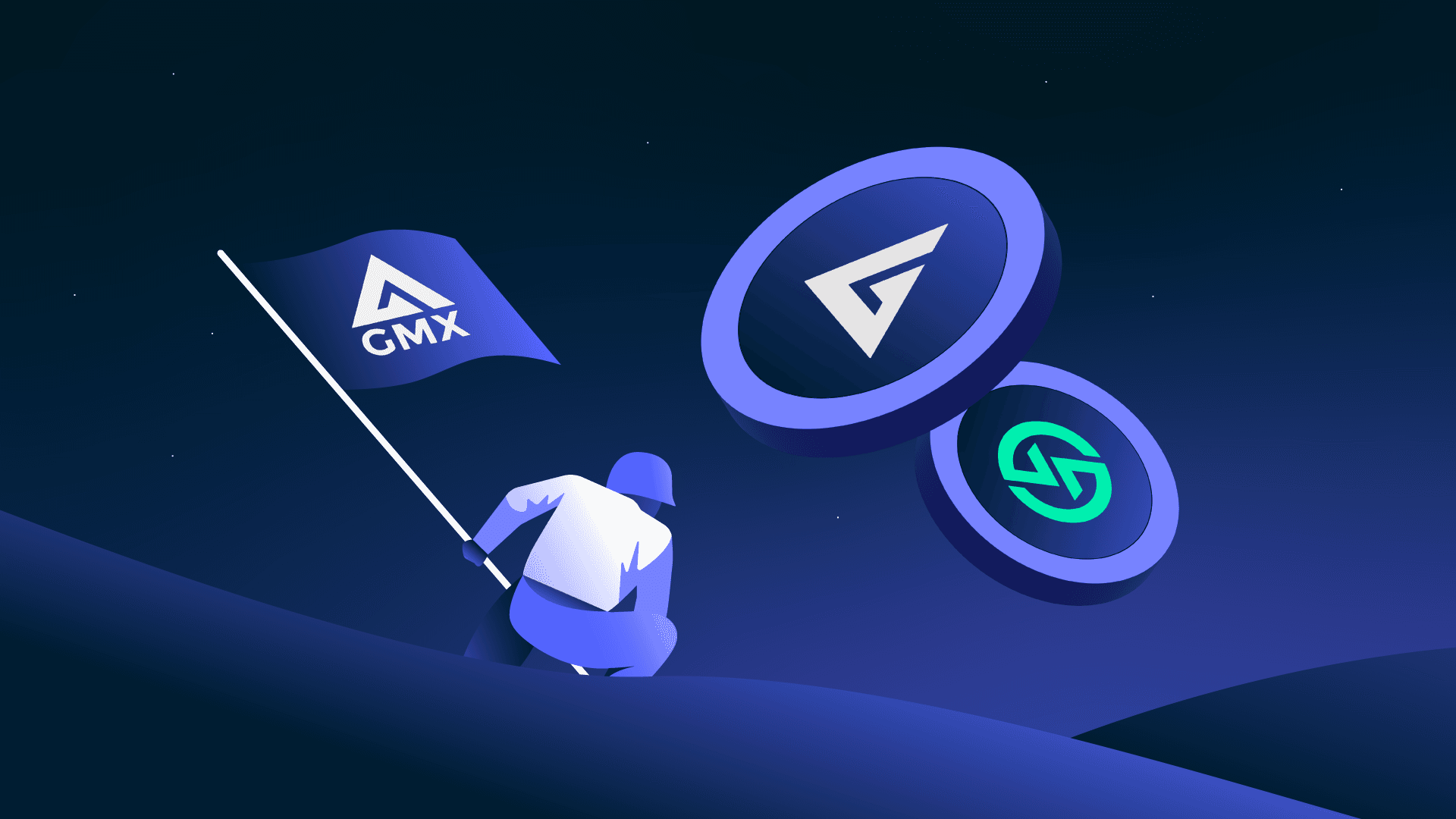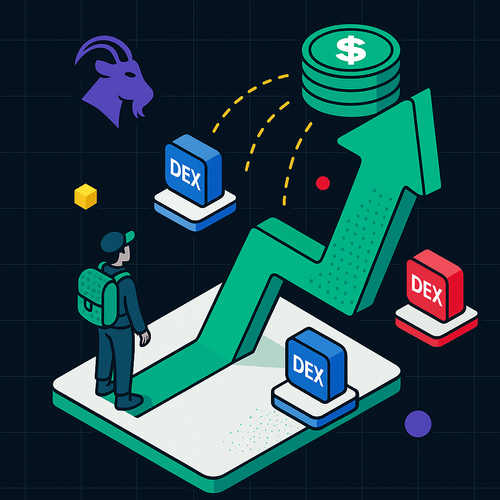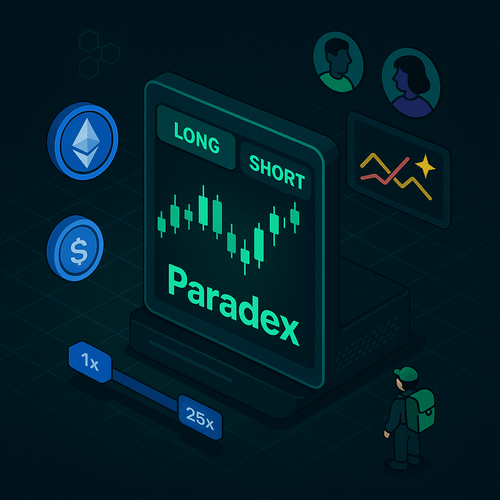GMX: A Brief Introduction
GMX has been gaining significant traction among traders and investors as a result of the FTX collapse, which has prompted many to turn to decentralized exchanges for perpetual trading. GMX has also gained attention for its low swap fees, zero price impact, and exposure to a diversified index-like product, GLP.
GLP is the liquidity token of GMX, consisting of a basket of assets such as BTC, ETH, and USDC in an approximately 50% stablecoins and 50% volatile assets ratio. LPs can add liquidity by swapping their assets for GLP tokens via the minting process. GLP acts as a counterparty for traders on the GMX platform.
GMX's GLP model spearheaded the real-yield narrative which prompted users to generate yield through platform fees rather than relying solely on inflationary tokenomics. Despite the recent end of esGMX emissions, the platform's steady user growth demonstrates the model's resilience.

GMX's growth trajectory is steady, with weekly revenues reaching ~$4.55m (an increase of 0.75% compared to the previous week) and sustained user growth, even in the presence of competing incentive designs and non-oracle DEX models like DEX Order Books and AMMs.

In fact, the open interest on GMX is closing in on dYdX over the recent months. Only time will tell, but the strong growth and sustainability of GMX and its GLP model suggest that it will continue to be a strong contender in the Perpetual DEX market.
Catalyst: GMX v2 and the GLP Wars
GMX v2 has been planned for some time and is expected to be launched in the near future. There are some important design changes to take note of:
LP Pool Changes
GMX V2 introduces individual liquidity pools for each trading pair to isolate risks, maintain security benefits of full collateralization, and facilitate permissionless listings. Synthetic assets can also be traded on V2, for example the SOL/USD market with ETH as long collateral, a stablecoin as short collateral, and index token as SOL. This allows for greater flexibility in asset trading.
Fee structure Changes
In GMX V2, the fee structure has been revised to include Funding Fees, Borrow Fees, and Price Impact, in addition to the basic open/close position fees. These changes aim to balance long and short positions, reduce inefficient use of trading capacity, and lower the risk of price manipulation.
Read more about the GMX v2 proposal in detail here.
The platform has already generated millions of dollars in weekly fees for the past months, and as it continues to attract more users and assets, the fees generated are expected to grow. This is a positive development for native GLP yields, and should lead to increased demand in GLP.
GLP Wars: The Current Landscape
What sparked the GLP Wars?
GLP has gained significant attention in the DeFi space due to its unique qualities such as generating "real yield" through platform fees, its relatively high and stable APR, and its well-balanced underlying asset basket. In the race to capture a slice of the $514 million worth of GLP liquidity in circulation, builders and traders are aiming to capitalize on the asset through various strategies, including leverage and delta or gamma neutral strategies, among others. This has led to a competition among protocols, similar to the "Curve Wars," to win the highest share of GLP holdings.
Who’s Winning and why? And what are the implications?

A cluster of GLP strategy vaults with significant market share has been identified, with Abracadabra (36%), Jones DAO (17%), GMD Protocol (9%), Rage Trade (8%), PlutusDAO (7%), Mugen Finance (3%), and Yield Yak (20%) being some of the most prominent ones. Abracadabra currently holds the highest percentage of GLP, followed by Yield Yak and Jones DAO.
Optimizing GLP Liquidity
There are many GLP strategy vaults in the market that cater to different user needs. These vaults can allow for GLP to be used as collateral, making the asset more capital efficient. Besides these strategy vaults can also alter GLP risk parameters by implementing leverage to increase exposure to risk assets, delta-neutral strategies to minimize price volatility risk, or using dollar-cost averaging to invest in GLP over time. Other strategies are also being developed to offer users more options to make the best use of their GLP holdings.
The success of the largest GLP strategy vault protocols can be attributed to several key factors. Firstly, costs and fees play a significant role in attracting users, as lower fees can lead to higher returns. Secondly, competitive yields and incentives, such as native token yields and ecosystem grants, are important for keeping users engaged and committed to the protocol. Lastly, the popularity of different vault strategies is dependent on market views, with certain strategies gaining more attention and usage depending on market conditions.
Top GLP Vaults flow changes in the past week and month

Recent on-chain data indicates that there has been a significant inflow of $5m into Abracadabra's leveraged GLP vaults over the past 7 days, and $14m over the past 30 days. This suggests a growing interest among GLP holders in leveraging their positions, and reflects a positive market sentiment among GLP holders who seek greater exposure to volatile assets.

Although over 525 million GLP tokens are circulating and earning fees, the major GLP vaults still represent less than 30% of the total GLP market. Since only <30% of the total marketcap of GLP is currently sitting in the top vault, there is a potential untapped market for GLP in the near future.
Maximize your GLP yields

GLP is a popular building block for many protocols' strategies. Some of the protocols that are taking a larger GLP market share, like Abracadabra and Yieldyak, are particularly favored for their leveraged GLP vault strategies.
For those interested in delta-neutral vault strategies, upcoming protocols like Steadefi and Neutra Finance are worth looking into, as delta-neutral vaults tend to fill up quickly.
PendleFinance has also emerged as a popular protocol, offering innovative strategies such as yield derivatives on GLP. Additionally, Flashstake is a newcomer that offers strategies based on its time-based derivative using GLP, which can be combined with Pendle Finance to generate high yields. Further details are discussed in the sections below.
Vaults Full or pending cap increase

At the time writing, the protocols listed on this table have either reached their vault capacity and are waiting for a cap increase or users can only enter if liquidity exits the vault.
Top Market Share Protocols and their Strategies for GLP Yield Optimization
Abracadabra.money
Abracadabra offers an auto-compounding feature called magicGLP for GLP tokens, utilizing yield from farming GLP to purchase more GLP, and then converting it into magicGLP. Users can leverage their positions up to 4x using MIM from the platform and earn up leveraged yields on their GLP.
magicGLP Mechanism details here.
Upcoming Leveraged Delta Neutral Vaults mentioned here.
Rage Trade
Rage Trade offers delta-neutral GLP strategy vaults and focuses on ETH perps. Their vaults allow GLP holders to hedge their positions, avoiding impermanent loss while earning a stable APR. They offer two different vaults which provide delta-neutral GMX liquidity positions and additional boosts in yield:
Risk-Off Vault
Rage Trade's Risk-Off Vault allows users to deposit USDC and earn interest from Aave while also earning a fraction of ETH rewards from GLP based on the amount of USDC lent to the Risk-On Vault.
Risk-On Vault
The Risk-On Vault provides a delta-neutral GMX liquidity position by hedging GLP’s ETH & BTC price exposure through opening short positions on Aave and Uniswap. It is then able to compound earnings by taking the escrowed GMX tokens and restaking earned esGMX & multiplier points.
Mechanism details here.
Jones DAO
Jones DAO is a DeFi protocol creating two GLP-based vaults: jGLP, a leveraged GLP vault, and jUSDC, a vault designed to minimize price exposure, similar to Rage Trade's Risk-On and Risk-Off vaults.
jGLP
jGLP is a leveraged GLP vault that aims to mimic the underlying assets of GLP, primarily BTC and ETH, using leverage. It allows users to gain exposure to BTC and ETH while collecting a multiplied level of GLP yield based on the leverage ratio.
jUSD
jUSDC is a USDC-based vault in the Jones DAO protocol that lends USDC to the jGLP vault for leveraging, and earns a portion of the yield generated from the jGLP vault in return.
Mechanism details here.
Mugen Finance
Mugen’s GMX strategy involves dollar-cost-averaging (DCA) into GLP by taking USDC deposited by users. However, it may be more profitable and easier to buy GLP directly from GMX without any additional fees.
Mechanism details here
GMD Protocol
GMD Protocol offers single-sided staking vaults for BTC, ETH, and USDC that utilize GLP for yield optimization and aggregation. By staking their assets with GMD, users receive gmdBTC, gmdETH, or gmdUSDC, while GMD Protocol purchases GLP tokens and redistributes half of the ETH rewards to stakers, while the other half goes to GMD stakers.
GMD Protocol offers users the opportunity to access half of GLP's yield while remaining exposed to only BTC, ETH, or USDC. The platform employs a pseudo-delta-neutral strategy to mitigate exposure to price volatility by continuously rebalancing their portfolio.
Mechanism details here, and GMD’s pseudo-delta-neutral strategy here.
Yieldyak
Yieldyak is a GLP auto compounder vault that restakes esGMX (discontinued on 5 Apr) and compounds AVAX to increase yield. Incentives were further boosted with Avalanche Rush’s $300K AVAX rewards distributed to GLP stakers.
Mechanism details here.
PlutusDAO
PlutusDAO offers an opportunity for users to deposit their GLP to earn yield and receive PlutusDAO's liquid staking tokens in return. The deposited tokens are used to aggregate governance power and provide deeper liquidity to liquidity pools for additional trading fees. Yield is earned from the original protocol and PLS emissions from PlutusDAO.
Mechanism docs here.
Upcoming Protocols: Strategies for GLP Yield Optimization
Pendle Finance
Pendle is a DeFi yield-trading protocol that allows users to wrap GLP into a standardized yield token (SY). SY is split into their principal and yield components, PT (Principal token) and YT (Yield token), which allows them to be traded via Pendle FInance’s custom V2 AMM. This creates a yield market for GLP and enables users to execute GLP yield strategies such as long GLP at a discount, fixed GLP yields for stable growth, long yield, or a mix of these strategies.
Mechanism docs here.
Nansen Research Pendle Finance Strategies Covered in detail here.
Flashstake
Flashstake offers an innovative way to earn upfront yield from the future. By staking GLP for a set period of time, users can receive instant payouts of USDC with rates up to 28% APR. Unlike a loan, there is no risk of liquidation of the collateral as the GLP remains 100% collateralized by Flashstake. Additionally, users can redeem their principal early by paying back a decreasing percentage of the yield. This can be useful for those looking to lock in current APR or use the upfront yield as capital to generate yield elsewhere. Flashstake operates as a marketplace, connecting stakers with counterparty buyers who purchase their future yield entitlement with the hope of profiting from a rise in yield.
Mechanism docs here.
General Strategies Summary
There are several popular strategies currently used for GLP farming, including delta-neutral farming (utilized by protocols like Rage Trade, JonesDAO and upcoming projects), leveraged farming (employed by Abracadabra and others), and newer strategies like GLP Yield Derivatives (offered by Pendle Finance) and GLP Time-based Derivatives (provided by Flashstake). As GMX v2 is on the horizon, It will be interesting to see how these strategies develop in the coming months and how they can be integrated with GMX 2.0 to enhance the DeFi ecosystem.
One such example of new strategy development is GLP Yield Arbitrage strategy below that leverages both Pendle Finance and Flashstake.
Combination Strategy with Pendle Finance & FlashStake: Yield Arbitrage
Yield Arbitrage: Flashstake & Pendle.fi
Step 1: Lock in 5,000 GLP for 180 days on Flashstake and receive 1,000 USDC immediately.
Step 2: Use the 1,000 USDC to buy 6180 YT-GLP on Pendle's Pro mode in Arbitrum.
Step 3: YT-GLP gives the right to get the yields of one GLP until Mar 2024 (the maturity, in 364 days). Claim real-time yields in Pendle Dashboard.
Step 4: This strategy allows you to swap 180 days of 5000 GLP yield for 364 days of 6180 GLP yield.
Step 5: The fixed APY in Flashstake is higher than the fixed APY (or Implied APY) on Pendle, creating an arbitrage opportunity.
This opportunity may no longer be feasible when Flashstake's APY comes down closer to Pendle's Implied APY.
Risks
Business Risk
The sustainability of GLP depends on GMX’s continued innovation and growth, with its next stage of growth being the GMX v2 model. GMX v2 aims to address limitations to GMX v1, and in sum aims to reduce risk, increase trading capacity, and support more asset trading. However, there are other challenges to be addressed in practice in GMX v2, such as boosting liquidity for long tail assets in isolated pools, along with other potential obstacles that may impede GMX's rapid growth.
Leverage Risk
Many of the GLP strategy vaults listed above employ leverage yield strategies, and can lead to magnified directional loss or gains that have to be managed by the users or protocols.
Depeg Risk
GLP's price is backed by a basket of underlying assets. Despite being designed to maintain a price of approximately $1 USD, GLP's price can still be affected in the event of a stablecoin depeg or other significant market events. This was demonstrated in March when GLP experienced a variance in price due to a USDC depeg caused by news related to Silicon Valley Bank. It's worth noting that in the event of an extreme depeg event, GLP's price will be impacted as well due to its underlying asset holdings.
Counterparty Risk
GLP's liquidity provision model can be compared to owning shares in a casino, where traders' losses become GLP profits and traders' profits become GLP losses. The profitability of GMX traders can fluctuate, leading to negative net profit and loss for GMX during certain periods. For example, Andrew Kang's successful bets on market direction on GMX for a time led to traders being very profitable, causing a negative net PnL(platform fees not included) for GMX. However, the overall performance of GLP suggests that it is a robust system, with traders' cumulative losses tending to offset sporadic big gains from some traders. This has been demonstrated in incidents involving LUNA and FTX. While there is a risk of traders draining GLP, the performance of the protocol has remained resilient.
Smart Contract Risk
All of the protocols mentioned earlier are susceptible to smart contract bugs and exploits, despite undergoing at least one audit. The risks associated with smart contracts are inherent, and recent incidents like the Sushiswap exploit and Yearn finance hack serve as a reminder of the potential vulnerabilities.




